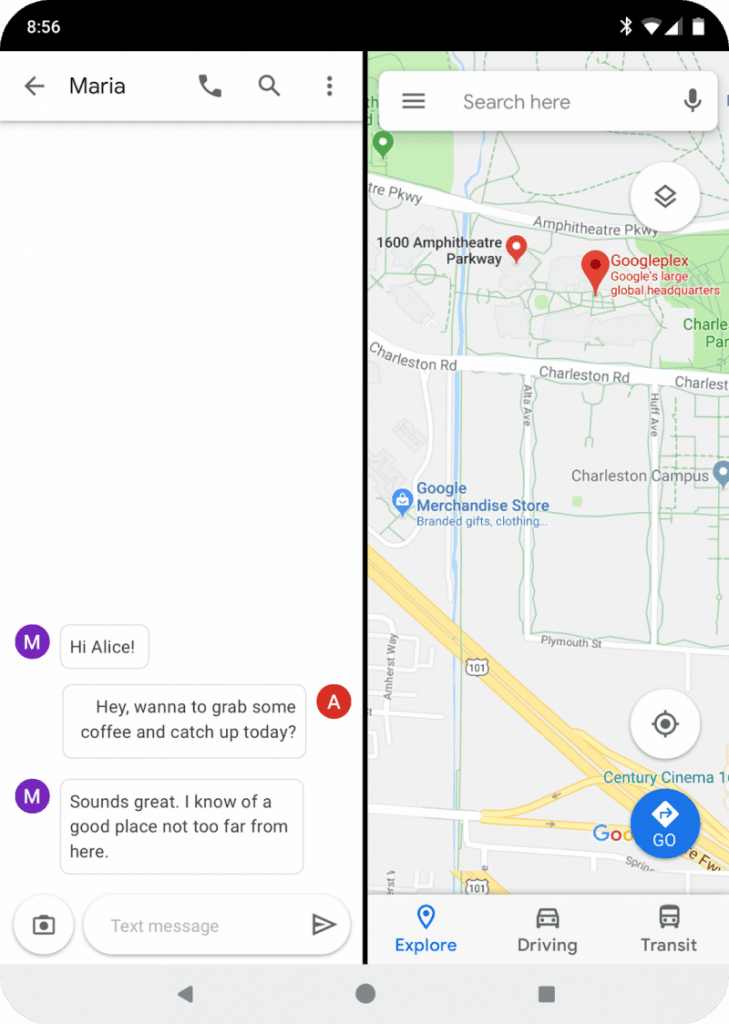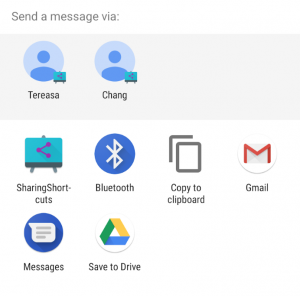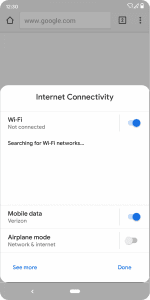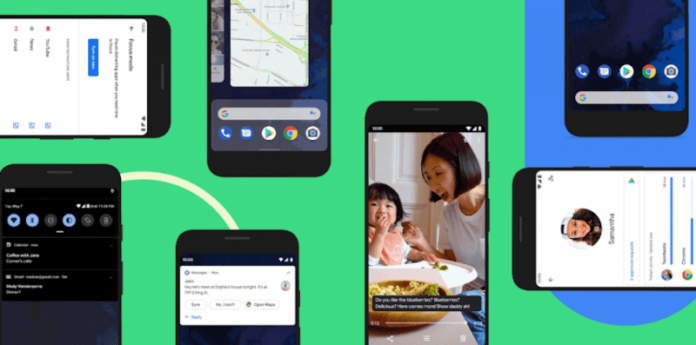A couple of weeks ago Google made Android 10 official. Last week, there was a report saying that the Android 10 will start rolling out to the Pixel devices starting September 3(today). Now, Google has started rolling out the stable version of Android 10 update to all the Pixel smartphones. Here’s the list of all the Pixel smartphones that are getting Android 10 starting today:
- Google Pixel
- Google Pixel XL
- Google Pixel 2
- Google Pixel 2 XL
- Google Pixel 3
- Google Pixel 3XL
- Google Pixel 3a
- Google Pixel 3a XL
[Update]: Essential Phone is also receiving the Android 10 update.

After naming all the previous Andoird versions after a dessert, Google decided to stop the routine and came up with Android 10. Until now, the version was Android Q and there were 6 versions of Android Q Developer Preview served over the past few months. Google says that they heard from the global community that the dessert names were hard to understand.
Android 10 Top Features
- Live Caption
With a single tap, Live Caption will automatically caption media that’s playing audio on your phone. Live Caption works with videos, podcasts and audio messages, across any app—even stuff you record yourself. As soon as speech is detected, captions will appear, without ever needing Wifi or cell phone data, and without any audio or captions leaving your phone.
- Smart Reply
This feature is now built into the notification system in Android, allowing any messaging app to suggest replies in notifications. Smart Reply will now also intelligently predict your next action—for example, if someone sends you an address, you can just tap to open that address in Maps.
- Gesture Navigation
Gestures are now quicker and more intuitive than ever. Go backward and forwards, pull up the home screen, and swipe up to see your open apps. All super smooth.
- Dark theme
Android’s new Dark theme uses true black to keep your battery alive longer. Plus, it also changes how your Google apps look, like Calendar and Photos.
- Focus mode
Focus mode is designed to help you focus without distraction. You can select the apps you find distracting—such as email or the news—and silence them until you come out of Focus mode. And to help children and families find a better balance with technology, Google is making Family Link part of every device that has Digital Wellbeing (starting with Android Q), plus adding top-requested features like bonus time, which lets your children gives that extra 5 minutes and the ability to set app-specific time limits.
- Family Link
Set digital ground rules and help make healthy habits. Help guide your kids as they learn, play, and explore online. You can set screen time limits, view app activity, manage apps and content restrictions, and see where they are.
- More control over location Permission
With Android 10, the OS helps users have more control over when apps can get the location. Previously, apps could only get location once the app has asked you for permission, and you had granted it. Android 10 enables users to give apps permission to see their location never, only when the app is in use (running), or all the time (when in the background).
For example, an app asking for a user’s location for food delivery makes sense and the user may want to grant it the ability to do that. But since the app may not need location outside of when it’s currently in use, the user may not want to grant that access.
- Privacy Protections

To ensure transparency, give users control, and secure personal data, in Android 10, the OS gives users even more control over apps, controlling access to shared files. Users will be able to control apps’ access to the Photos and Videos or the Audio collections via new runtime permissions. For Downloads, apps must use the system file picker, which allows the user to decide which Download files the app can access. For developers, there are changes to how your apps can use shared areas on external storage. Make sure to read the Scoped Storage changes for details.
- Connectivity permissions, privacy, and security
In Android 10, for Bluetooth, Cellular, and Wi-Fi, Google is increasing the protection around those APIs by requiring the FINE location permission instead. Android 10 is adding new Wi-Fi standard support, WP3, and OWE, to improve security for home and work networks, as well as open/public networks.
- Support for Foldable devices
 With more foldable phones coming in the future, Android 10 will bring a number of improvements in to take advantage of the large screen, including changes to onResume and onPause to support multi-resume and notify your app when it has focus.
With more foldable phones coming in the future, Android 10 will bring a number of improvements in to take advantage of the large screen, including changes to onResume and onPause to support multi-resume and notify your app when it has focus.
- Sharing shortcuts
 One of the most annoying thing in the current Android world is the slow sharing option, Google is trying to fix that with this version. In Android 10 the sharing shortcut is quicker and easier, let users jump directly into another app to share content.
One of the most annoying thing in the current Android world is the slow sharing option, Google is trying to fix that with this version. In Android 10 the sharing shortcut is quicker and easier, let users jump directly into another app to share content.
Settings Panels A settings panel is a floating UI to show system settings that users might need, such as internet connectivity, NFC, and audio volume. For example, a browser could display a panel with connectivity settings like Airplane Mode, Wi-Fi (including nearby networks), and Mobile Data. There’s no need to leave the app, users can manage settings as needed from the panel.
A settings panel is a floating UI to show system settings that users might need, such as internet connectivity, NFC, and audio volume. For example, a browser could display a panel with connectivity settings like Airplane Mode, Wi-Fi (including nearby networks), and Mobile Data. There’s no need to leave the app, users can manage settings as needed from the panel.
- Connectivity
In Android 10, developers can do with Android’s connectivity stack and added new connectivity APIs to achieve better performance.
- Dynamic depth format for photos

Starting in Android 10, apps can request a Dynamic Depth image which consists of a JPEG, XMP metadata related to depth-related elements, and a depth and confidence map embedded in the same file on devices that advertise support. Requesting a JPEG + Dynamic Depth image makes it possible to offer specialized blurs and bokeh. Developers can even use the data to create 3D images or support AR photography use-cases in the future.
- New audio and video codecs
Android 10 introduces support for the open-source video codec AV1. This allows media providers to stream high-quality video content to Android devices using less bandwidth. In addition, Android 10 supports audio encoding using Opus – a codec optimized for speech and music streaming, and HDR10+ for high dynamic range video on devices that support it. The MediaCodecInfo API introduces an easier way to determine the video rendering capabilities of an Android device.
- ART performance (Android Run Time)
Android 10 introduces several new improvements to the ART runtime which help apps start faster and consume less memory. Since Android Nougat, ART has offered Profile Guided Optimization (PGO), which speeds app startup over time by identifying and precompiling frequently executed parts of your code.
Security for apps
In Android 10 Google is adding authentication methods such as the face, and adding implicit and explicit authentication flows.
Other Android 10 Features
- Compatibility through public APIs
- Neural Networks API 1.2
- Vulkan API for high-performance 3D graphics
- Native MIDI API
- ANGLE on Vulkan
- Wi-Fi performance mode
- System-wide Dark Mode
- More control over location Permission
- Privacy Protections
For more news and the latest updates follow us on Twitter and Facebook.
Source












